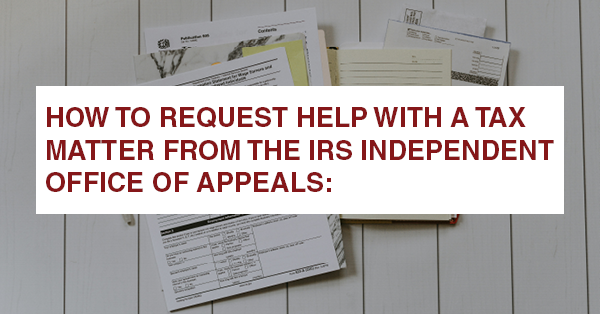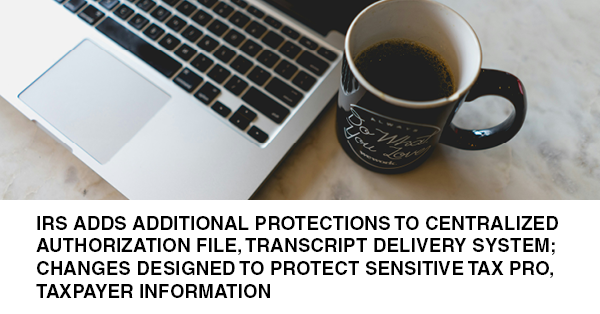IRS RELEASES STRATEGIC OPERATING PLAN:

The Internal Revenue Service has released an update on the Strategic Operating Plan, a blueprint outlining future plans for the agency’s transformation work and highlighting dozens of improvements for taxpayers since passage of the Inflation Reduction Act.
The annual update focuses on major accomplishments the agency has accomplished since IRA’s passage in August 2022. The sweeping array of changes has improved taxpayer service, taken steps to add fairness to tax compliance and added new technology tools to help taxpayers and the tax professional community. These efforts culminated this year in one the agency’s most successful filing seasons ever with dramatic improvements in taxpayer service and new tools.
In addition, the IRS released an accompanying 52-page document that summarizes the current work underway and outlines the agency's historic plans to make fundamental changes with Inflation Reduction Act (IRA) funding. The report focuses on changes underway and planned for Fiscal Years 2024 and 2025 across taxpayer service, tax compliance and technology modernization.
IRS Commissioner Danny Werfel described the modernization changes outlined in the Strategic Operating Plan as a “generational imperative” needed to serve the nation and taxpayers.
“You will see in these documents that we have made tremendous progress toward realizing the goals of the plan, and work continues to accelerate,” Werfel wrote in the report’s introduction. “We have made fundamental changes that have improved taxpayer services, brought new fairness to compliance efforts and launched important changes to our technology. We are making a difference to taxpayers and the nation, and the improvements at the IRS are just beginning.”
“The changes outlined in this report are a stark contrast to the years of under-funding that deteriorated taxpayer service and tax enforcement, frustrating taxpayers, the tax community and IRS employees alike,” Werfel added. “The funding provided by the Inflation Reduction Act creates a unique opportunity to realize a future of tax administration that meets the evolving needs of taxpayers. This opportunity is important for the future of the IRS, the nation and especially the taxpayers we serve.”
The road ahead in 2024 and 2025
The Strategic Operating Plan update issued today refines last April’s initial plan. The update provides an outline of the major projects and outcomes IRS expects to deliver over the next 12 to 18 months, including progress on the Simple Notice Initiative, enforcement activities and efforts to modernize foundational technology and improve IRS employee tools to help taxpayers. The update also includes additional details on spending and staffing.
The plan focuses on five key objectives:
- Objective 1.Dramatically improve services to help taxpayers meet their obligations and receive the tax incentives for which they are eligible.
- Objective 2. Quickly resolve taxpayer issues when they arise.
- Objective 3.Focus expanded enforcement on taxpayers with complex tax filings and high-dollar noncompliance to address the tax gap.
- Objective 4.Deliver cutting-edge technology, data and analytics to operate more effectively.
- Objective 5.Attract, retain and empower a highly skilled, diverse workforce and develop a culture that is better equipped to deliver results for taxpayers.
The Strategic Operating Plan update also highlighted a number of areas where changes will accelerate into Fiscal Year 2025. Key areas of focus through 2025 include:
- Enhancing live assistancethrough improved efficiency in call centers, reduced backlog of paper returns and continued expanded staffing levels at Taxpayer Assistance Centers and “Pop-up Live Assistance Centers” in rural and other areas, while working to ensure taxpayers are aware of all available credits and benefits.
- Expanding online servicesby expanding the features available in online accounts, including digital copies of notices, status updates, secure two-way messaging and expanded payment options.
- Accelerating digitalizationby providing up to 150 non-tax forms in digital mobile-friendly formats in addition to the 20 delivered in fiscal year 2024 as well as scanning at the point of entry virtually all paper-filed tax and information returns.
- Simplifying noticesby redesigning up to 200 notices, capturing 90% of all notice volume for individual taxpayers and initiating business process changes necessary to flexibly generate notices and reduce taxpayer burden.
- Disrupting tax scams and schemes by coordinating with partners to identify scams and victims and improving victim assistance.
- Modernizing foundational technology and aged programming from the point of intake of tax returns and information systems. Data security will be integrated throughout to protect the integrity of the tax system and taxpayers.
- Modernizing how the IRS attracts, retains, develops and empowers employees, focusing on efforts to ensure they have the tools, training and culture they need to perform at their best.
- Improving IRS employee toolsby developing and integrating high priority software tools into operations to help taxpayers and improve service.
- Ensuring fairness in enforcementthrough hiring and increased training in critical staffing areas such as those dedicated to high-income earners and large and complex partnerships.
Upcoming changes build off major improvements in taxpayer service, compliance and IT
The changes planned for the rest of 2024 and 2025 build off a long string of successes made by the IRS in less than two years.
During the just completed 2024 filing season, the IRS answered over a million more calls than last year while maintaining an average wait time of just over three minutes. The callback option saved taxpayers an estimated 1.5 million hours of sitting on hold. IRS Taxpayer Assistance Centers served more than 780,000 taxpayers in person, an increase of more than 37% over last year.
Using IRA funding, the IRS enhanced many online tools, such as Where’s My Refund, Individual and Tax Pro Online Accounts, while also launching new ones, including the Business Tax Account for individual partners of partnerships, individual shareholders of S corporations and sole proprietors with an employer identification number (EIN). And more than 140,000 taxpayers submitted tax returns through Direct File, a pilot program for taxpayers to file for free, directly with the IRS.
Using IRA funding, the IRS also saw progress in enforcement activities, recovering $520 million in its efforts to pursue high-income, high-wealth individuals who have either not filed their taxes or failed to pay recognized tax debt. Using artificial intelligence (AI) and advanced analytics to help select complex partnerships for audits, the IRS opened audits of 76 of the largest partnerships in the U.S. that represent a cross-section of industries including hedge funds, real estate investment partnerships, publicly traded partnerships, large law firms and other industries.
Reminder: Calendar Year Form 990 series filing deadline this year is May 15
Form 990, 990-EZ, Form 990-N, or 990-PF must be filed by the 15th day of the 5th month after the end of your organization's accounting period. For a calendar year taxpayer, Form 990, 990-EZ, Form 990-N, or 990-PF is due May 15 of the following year. Which Form 990-series return to file depends on the tax-exempt organization's financial activity:
| Status | Form to file |
|---|---|
| Gross receipts normally < $50,000 | Form 990-N |
| Gross receipts < $200,000 and Total assets < $500,000 | Form 990-EZ or Form 990 |
| Gross receipt > $200,000 or Total assets > $500,000 | Form 990 |
| Private foundation – regardless of status | Form 990-PF |
What if an organization needs more time to file?
Tax-exempt organizations that need additional time to file beyond the May 15 deadline can request a 6-month automatic extension by filing Form 8868, Application for Extension of Time To File an Exempt Organization Return. In situations where tax is due, extending the time for filing a return does not extend the time for paying tax. The IRS encourages organizations requesting an extension to electronically file Form 8868.




